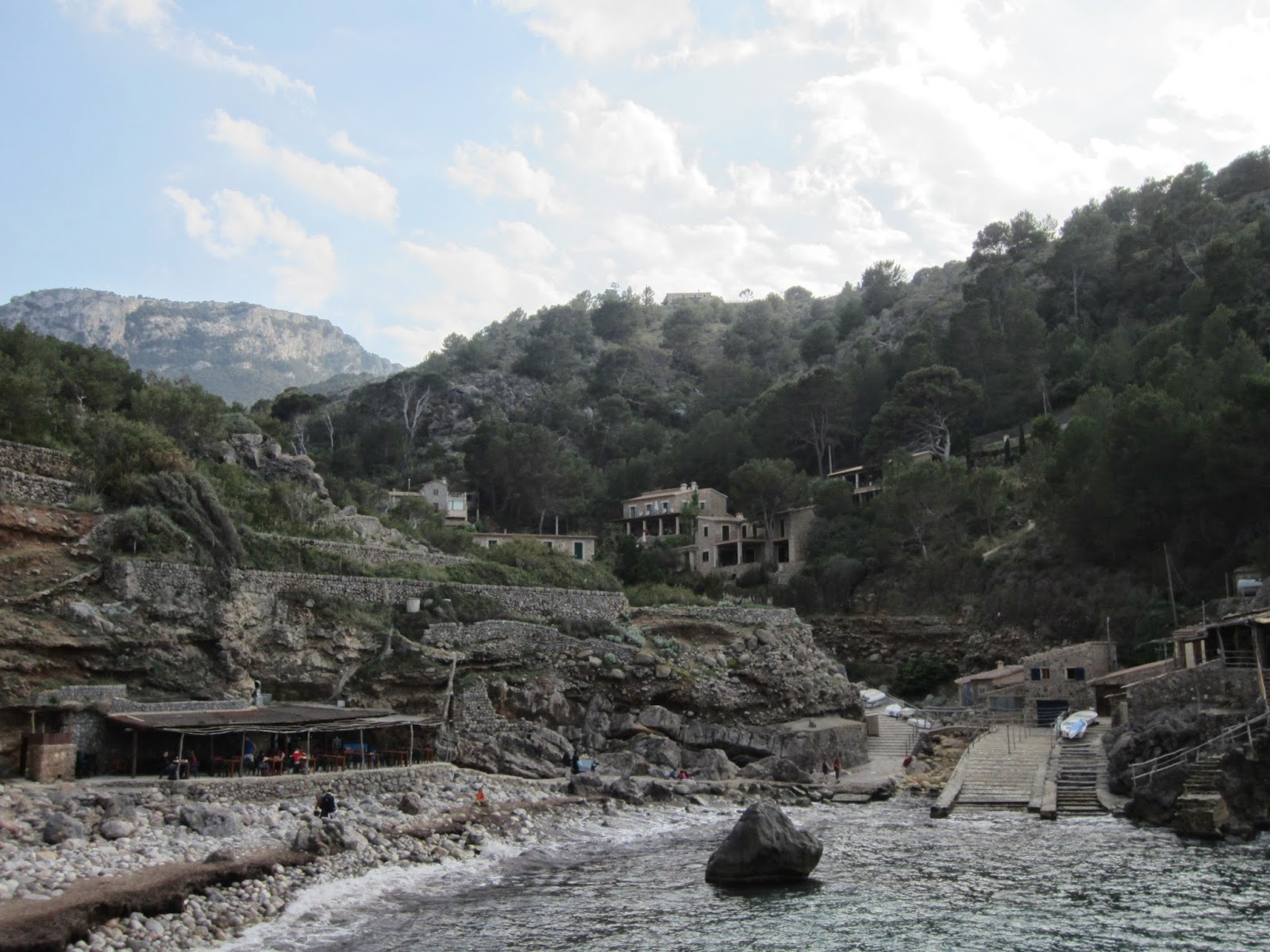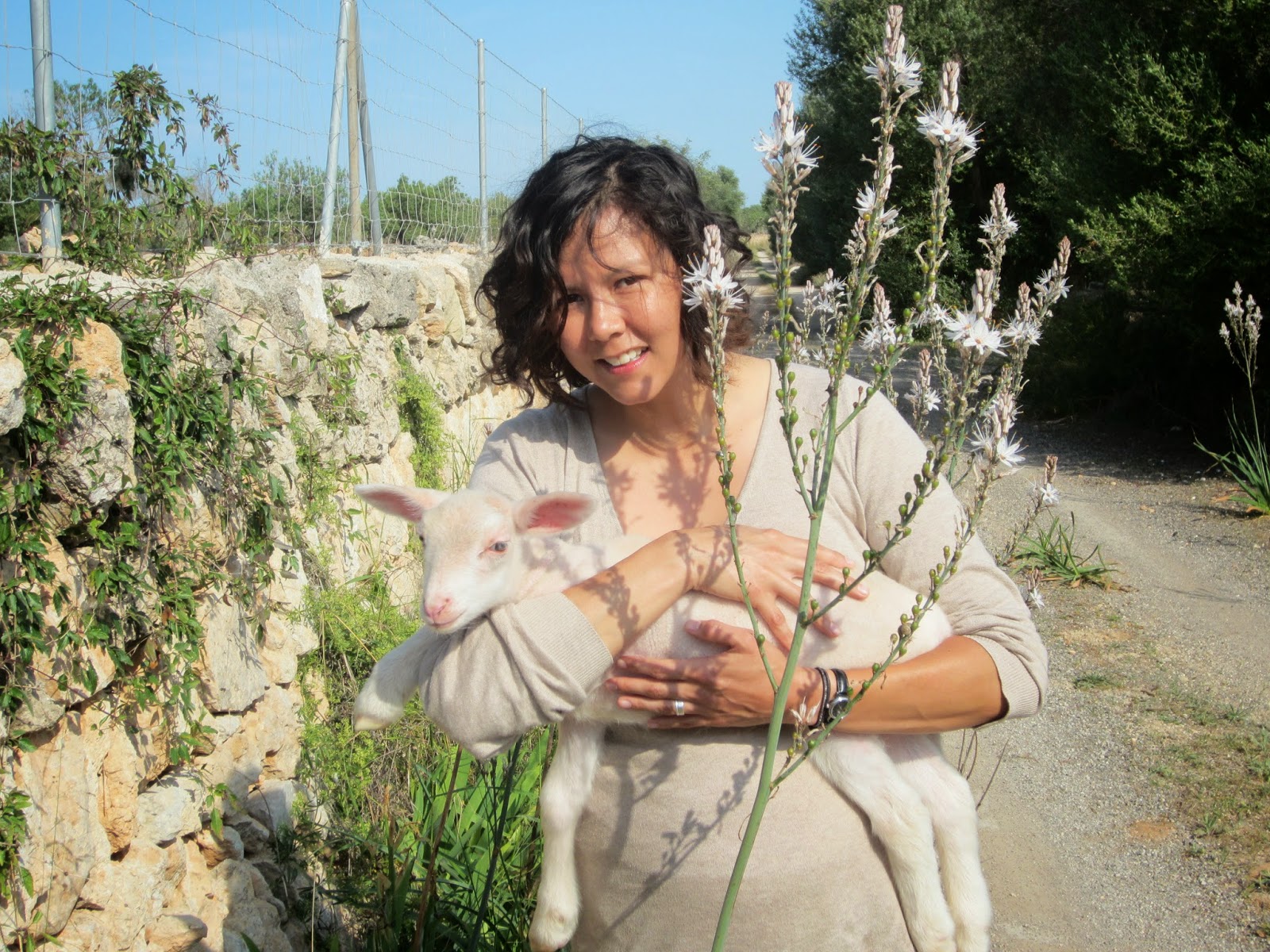This past weekend I decided to take a little trip to Jaén, the capital of the province Jaén, Spain where Siles is located. Considering all the amazing places to visit in Andalucia, Jaén is not the most impressive however there was plenty to see and do. One Day 1 I hiked up to the Castle of Santa Catalina that began as an 8th Century Moorish fortress. Most of the outer walls have crumbled back into the earth but the main structure at the top was turned into a luxury hotel. The views were impressive. You had a 360° view of the entire city and beyond the city limits were hundreds of thousands of olive trees. I managed to take a few photos with my cellphone but they don't do justice to the beauty of the landscape.
 |
| You are looking down at the World Capital of Olive Oil. About 117,000 people live in Jaén. |
 |
| From the top of the castle you could see a village that is on the other side of the mountain. Sorry for the lack of clarity but if you look towards the right center you can see the olive groves in their perfect linear patterns. Now imagine this green dotted textured covering every hillside as far as you can see. It's spectacular! |
 |
| More from the top as you approach the western most boundary of the fortress. The structure on the bottom right was really impressive and seemed very old...maybe a monastery? |
 |
| This cross is at the very end of the fortress wall. It is about as tall as a 2 story building. On the base were many messages of love and romance. "Te quiero" was probably written about 100 times in all kinds of handwriting and ink colors. |
 |
| On my way back I met a mule in a almond tree orchard. My favorite thing about almond trees is that they bloom in February. It seems like Spring is coming but there is still about 6 more weeks of winter. |
 |
| Mutual curiosity! |
On Day 2 I took a trip to Begijar which is a tiny village about the size of Siles. There I experienced the world of olive oil making and the importance of what is equivalent to liquid gold. I was lucky enough to have a private tour of the facility because I booked my tour on a Sunday during the off season.
The first lesson was to explain that about 80% of the economy of Jaén depends on the olives for oil, olives for eating, cosmetics, lubricants, and other products made with oil. This year the olive production had a high medium yield which was significantly better than last year according to the owner of the factory.
The second lesson was all about how olive oil is the fruit juice of an olive. No one would use a bad orange to make a carton of OJ and the same goes for making olive oil. These fruits are super sensitive and can spoil very quickly from oxidation (the process that turns bananas, apples, and avocados brown for example). Though there are 200 varieties of olives growing in Jaén, the most common and important one is called Picual. It contains the most oil and has the lowest rate of oxidation.
The third and most impressive lesson was on the process. The best olive oil comes from olives that were picked off the tree and not allowed to fall onto the ground. These olives get the honorary labels of Virgin and Extra Virgin Olive Oil because they are of the highest quality. The idea is to think of this oil as pure olive juice made only from the work of machines (never through chemical extraction). The olives are freshly ground into a mash. The mash is spread onto mats and stacked into layers. The stack is pressed by a heavy weight that forces the olive oil to drain off the sides and down in to a reservoir. Here is a wiki with some photos
Wikipedia on Olive Oil Making. Then it's filtered and bottled. The final step is for it to be evaluated by highly trained olive oil tasters called catas. Many factors can influence the taste including minerals from the earth in which the tree was growing, particles from the processing, oxidation, species of the plant, and time of harvesting. My personal favorite was the olive oil made from the first olives of the season. At this time the olives are still very green and the flavor they produce is a little bitter with a sting at the back of the throat. Sounds terrible but actually it was the most unique flavor and the best to me. The last harvest occurs in January and at this point the olives are fully ripened into a purplish black color. This olive oil is very smooth on the tongue and slightly sweet. Also very good!
The last lesson which was the most interesting was on the use of the olive parts that don't become oil. The skin of the olives gets processed into fertilizer for the olive trees and also added to animal feed. Olives are super healthy and loaded with anti-oxidants that fight disease including cancer. Pretty amazing! Next, the pits are ground and dried to become a source of fuel for heating homes. Lastly, the watery mixture with suspended bits of oil is sent off to be processed with chemicals to extract the oil which will be used for non-edible products like lamp oil and lubricants.
 |
| The factory toured ended with a tasting of 3 gourmet olive oils. The most important ingredient is love. Notice the blue glass container. This glass is used by catas when they are evaluating the oil to disguise the color of the oil because there is a misconception that darker green colored oil has a higher quality. |
Finally on Day 3 of my mini-vacation I found a really nice indoor pool and swam and swam and swam. All in all, I really enjoyed spending my time as a tourist for a weekend. One thing is for sure, I can never look at olive oil in the same way again. Knowledge is so powerful! Hopefully I will be forever changed by the Spanish language learning too. Bueno, saludos a todos y hasta pronto!













































